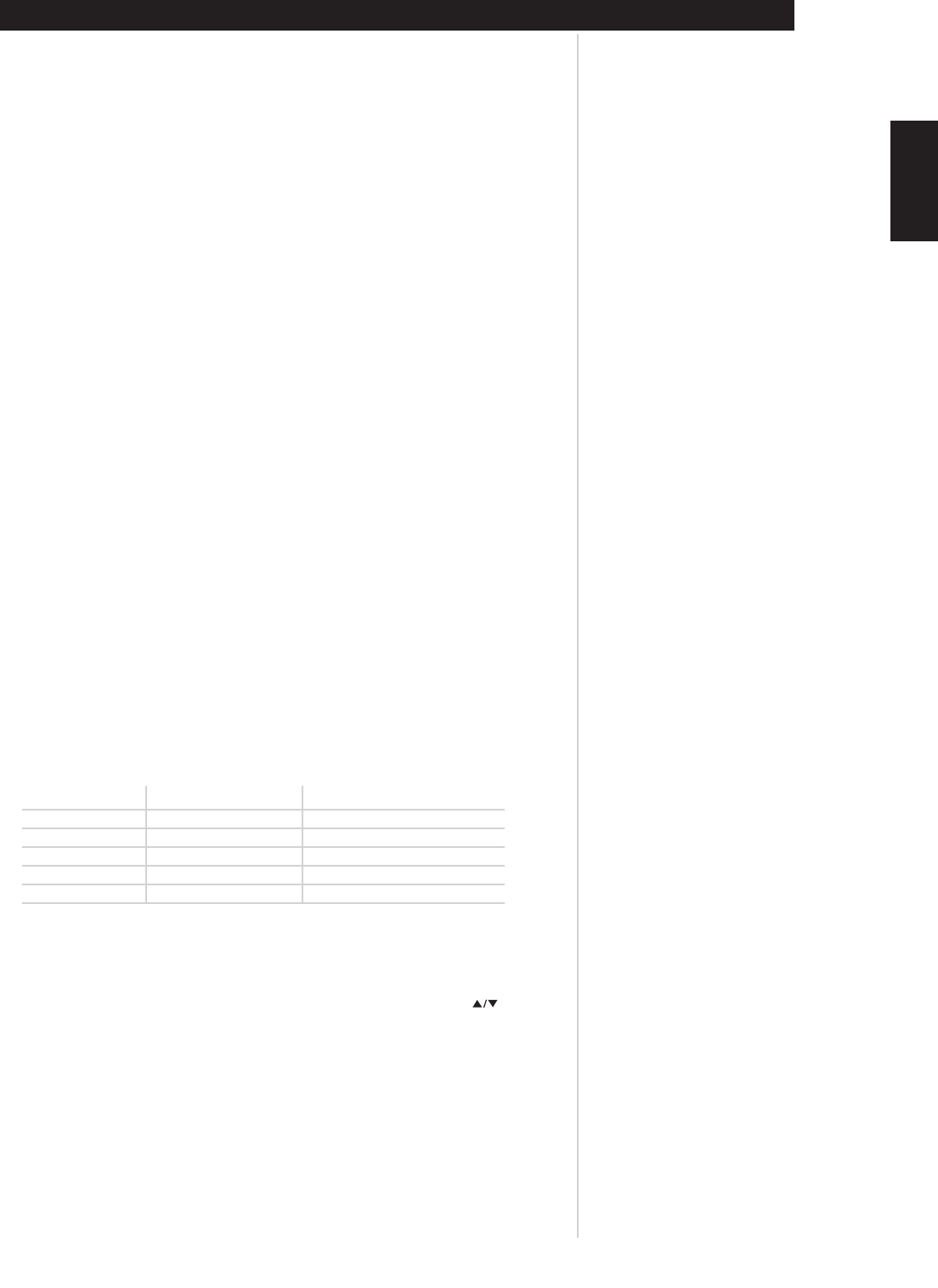
ENGLISH
FRANÇAISDEUTSCHESPAÑOLITALIANO
PORTUGUÊS
SVENSKA
25
USING THE S170i
EARS
Stereo recordings (and surround-encoded stereo recordings), whether in PCM/digital or analog form, are
reproduced with proprietary NAD surround processing with output to left, center-, and right-front
channels and both surround-channel speakers. EARS extracts the natural ambience present in nearly all
well-produced stereo recordings. It does not synthesize any ambience or other sonic elements and thus
remains far truer to the sound of the original musical performance than most other music-surround
options.
Select EARS for listening to stereo music recordings and broadcasts. EARS produces a subtle but highly
natural and believable ambience from nearly all “natural-acoustic” stereo recordings; typically, these
include classical, jazz, and folk genres as well as numerous examples from others. It’s virtues include a
realistic, stable “front-stage” sonic imaging and spacious but unexaggerated ambient “virtual acoustics”
that remain faithful to the original recording.
NOTE
When listening to FM broadcasts, “multi-path distortion” may be more clearly revealed by the EARS
circuit. This can be used to advantage in optimally orienting an FM antenna for a given FM station.
EARS cannot be applied to multichannel digital recordings (Dolby Digital/DTS); these recordings carry their
own surround and ambience in their multichannel nature. However, EARS may be applied to these
recordings when they are played back via the analog stereo outputs of a DVD or other player, or when
the DVD or other recording’s soundtrack selection is set to “stereo/PCM” rather than “5.1” or equivalent.
ANALOG BYPASS
Stereo or monaural recordings from any S170i source’s analog input jacks are routed directly to the left-
right-front outputs with no processing whatsoever.
Use Analog Bypass to reproduce minimal-signal-path “audiophile” conditions for critical listening of two-
channel (or monaural) sources.
No bass management is performed in Analog Bypass mode, so signals are reproduced by the left- and
right-front channels “full-range,” regardless of the settings entered on the S170i’s Speaker setup page.
The table below indicates which listening modes are available with the three possible types of signal
sources: digital-input 2-channel (whether the actual signal is monaural, stereo or surround-encoded);
analog-input 2-channel (mono, stereo or surround-encoded), or digital-multichannel (Dolby Digital or
DTS). Where a listening mode is not available to a given signal source, it will not appear in the <Mode>
selection rotation.
2-ch. PCM 2-ch. analog Multi-ch. (DD/DTS)
Mono Mono Mono
Stereo Stereo Stereo
Pro Logic Dolby Pro Logic Direct
EARS EARS Surround 6.1*
—- Analog Bypass —-
*If setup with “Back” speaker(s)
SELECTING LISTENING MODES
NOTE THAT:
•You must re-key [Mode ] if a few seconds pass since your last use of the [Cursor ] to change
listening modes
• Neither changing the selected input, cycling the S170i through Standby or powering down, nor
engaging mute will change the selected listening mode.
• Changing the type of signal will change the listening mode if the new signal is a digital-multichannel
recording, or is incompatible with the selected mode. For example: After listening to a CD played on
a DVD/CD player via the EARS listening mode, you remove the CD and replace with a 5.1-channel
multichannel DTS CD recording. The S170i will automatically engage DTS/5.1 playback.


















